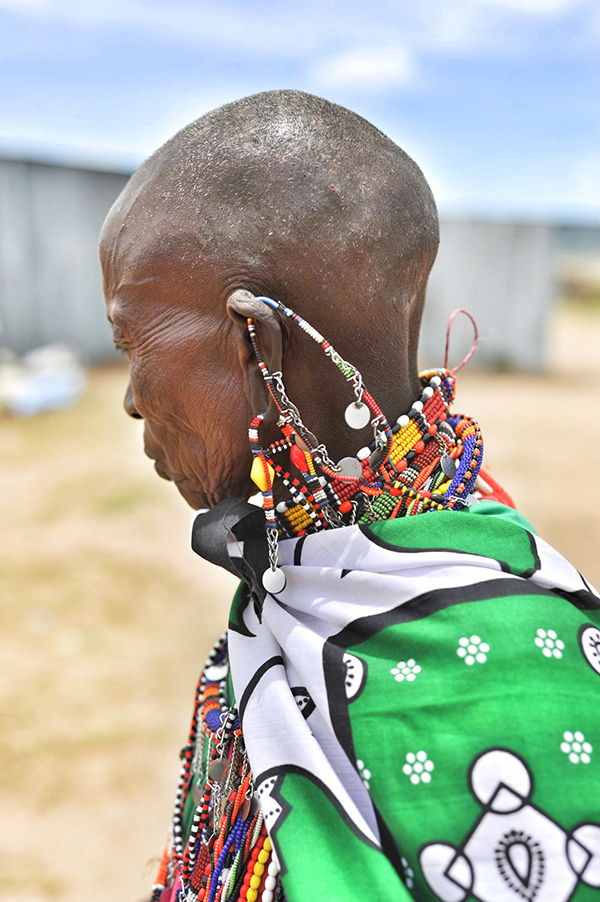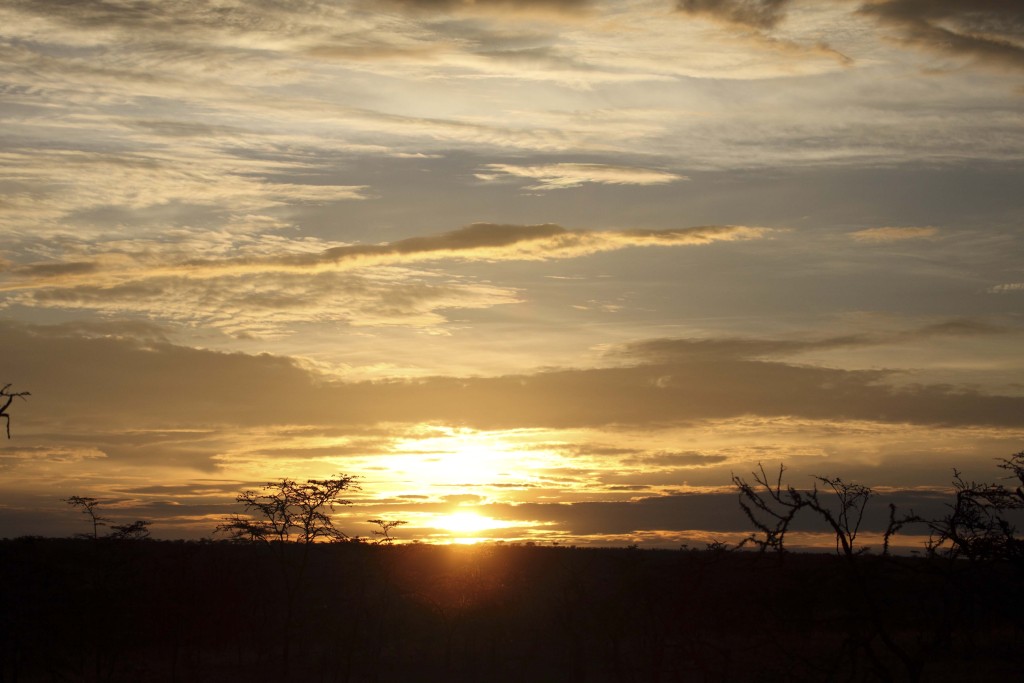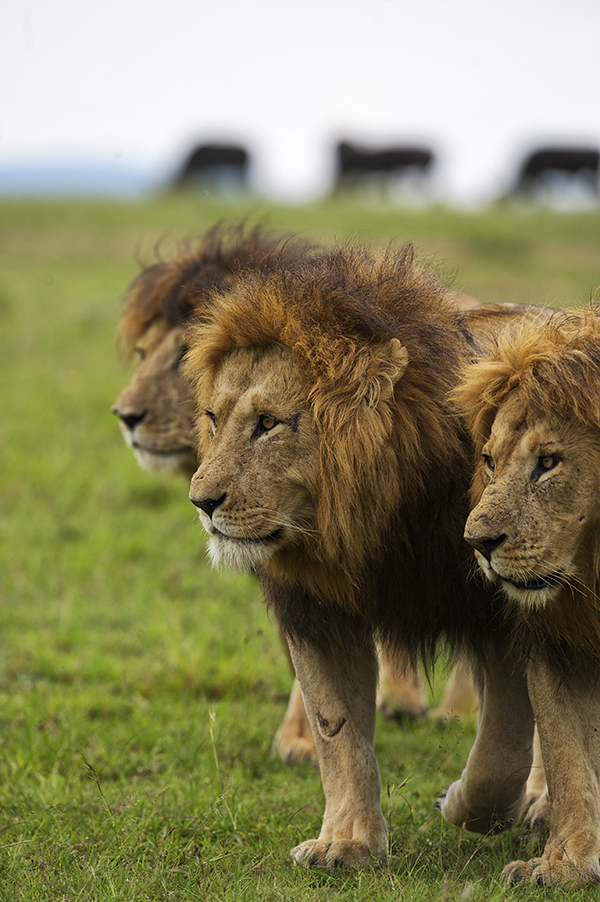Conservation’s Future – The Naboisho Story
Where people and wildlife co-exist
Naboisho Conservancy, at the edge of the world-famous Maasai Mara Game Reserve in Kenya, is making waves for all the right reasons. Six years ago the area was a group ranch, communally owned by Maasai people, who then opted to subdivide it into 150-acre plots and acquire title deeds.
The danger in a patchwork of parcels, each serving the interests of 554 different landowners, would have been catastrophic for the Great Migration and other wildlife had another model not been adopted
Enjoying a long-time relationship with the Beaton family and the Koiyaki Guide school, Asilia Africa and Basecamp Foundation decided to investigate the possibility of turning Naboisho into a conservancy of its own. “Knowing the area intimately and seeing other Conservancies evolve it seemed the natural step for this area,” says Gerard Beaton, Asilia Africa Country Manager for Kenya.
What transpired is unique in the story of Kenya conservancies.
The primary goals of Naboisho, which means ‘coming together’ in the Maa language, are the preservation of biodiversity and cultural heritage as well as social development. Covering 20,000 hectares of prime cattle grazing land, householders displayed a remarkable level of confidence and hope in signing up to the partnership. The initial sign-up of local Maasai households was 94%. It now stands at 98%.
The householders signed their land over to a landholding company, with directors appointed by them, which in turn has a management agreement with the conservancy. The conservancy board comprises seven members and is nominated by both tourism partners and the landholding company with an independent chair. The board is responsible for making all conservancy-related management decisions. General management of the conservancy (e.g. security and maintenance of infrastructure) is outsourced to a third-party company that employs locals as rangers.
What makes the Naboisho model unique is that Maasai households and commercial tourism partners are represented equally on the conservancy board. Decisions are made by consensus.
“The average lease periods in the Maasai Mara before these Conservancy agreements were less than five years,” Beaton explains. “This provided insufficient security for enduring conservation tourism investment. Olare Motorogi Conservancy led the way in convincing their landowners to convert from a 5 year to 15-year lease, from there it became the norm.” Naboisho’s leases are for 15 years.
Each household is guaranteed an annual lease fee of US$35/hectare with an annual 8% upward adjustment to cover inflation. Four experienced ecotourism operators are responsible for generating this revenue through six camps and lodges which provide 142 jobs and further indirect benefits to 10,000 local people.
Dickson Kereto is a landowner and guide at Naboisho camp. “Before the Maasai Mara was far from our village so tourism didn’t really mean anything unless you had a job far away. Now tourism has come to us.”
“Life would have been very difficult if there was no tourism because of climate change and livestock dying due to drought,” he continues.
Naboisho is a lesson in collaboration that has global significance.
Interestingly, the value of the land under conservation is $122/annum which is significantly higher than the conservancy rental payments. However, a monetary analysis is too simple as it ignores the many other benefits, financial and non-financial, that the conservancies bring to the people of the Mara.
The conservancy allows managed grazing of landowners’ cattle at agreed times of the year and agreed numbers and is exploring a livestock trading programme as a way to improve incomes for landowners.
Several other benefits accrue to local landowners through the conservancy. Education – primary, secondary and tertiary – is funded by the landowners themselves through the rental and bednight fees earned and is a good example of self-determination. It is also funded by the tourism partners through their own philanthropic arms. Traditionally conservancy stakeholders have funded six or seven scholarships per year to the Koiyaki Guide School. More than 30 Maasai women have graduated and are now safari guides.
Health, water and sanitation are also improved through the collaboration of stakeholders and revenues earned.
Micro-finance, saving and investment groups have been mobilized in local communities through the Maa Trust, a social development non-governmental organization with deep roots in the area. Women who have joined the programme are entrepreneurs. They own grocery shops, sell beadwork, trade livestock, keep bees and lend money. The groups provide a useful structure through which issues such as health education, adult literacy and advocacy against early marriages are promoted. Many camps sell the beadwork of which 100% of the profits go to the craftswomen.
It hasn’t all been plain sailing though.

“Some families signed up promising to relocate from the Conservancy but then enjoyed the free grazing. It has taken five years to clear the conservancy of villages,” Beaton says. “In addition, we’ve had a very challenging business climate so tourism partners have had to invest significantly more than was envisaged, with one partner calling it a day after four years. Fortunately, Asilia was able to buy them out. It is a stark reminder that we are only as strong as our weakest link.”
But the tide seems to have turned for East Africa’s tourism industry and forecasts indicate a definite uptick in enquiries and reservations.
The Mara-Serengeti ecosystem is one of the last major wildlife refuges on earth. It covers 25,000km2. The northern section in Kenya provides crucial dry season grazing for plains game and habitat for some of Africa’s last sustainable populations of cheetah and lion. The Naboisho Conservancy has emerged as the most important single wildlife conservancy in the Maasai Mara as it creates a safe dispersal area, wet season pasture, migratory corridor and breeding and feeding area for migratory and resident wild grazers and carnivores. It has one of the highest lion densities in Africa.
About Asilia Africa:
Founded in 2004, Asilia Africa has a leading presence in the main safari destinations in Tanzania and Kenya as well as a driving role in a number of pioneering projects. Asilia’s ultimate goal is to turn crucial and fragile natural habitats into lasting conservation economies, benefiting both the environment and local communities. Asilia is the first Sustainable Safari / Lodge Company in Africa to receive a 5 Star rating for Sustainability from GIIRS, was recognized as one of the “Best Companies for the World” in 2013 and was awarded the 2014 Tourism for Tomorrow Business Award.
Asilia’s portfolio of camps includes:
In Tanzania: Sayari Camp, Dunia Camp, Olakira Camp, Kimondo Camp, Kwihala Camp, Namiri Plains, Oliver’s Camp, Little Oliver’s, Ubuntu Camp, The Highlands and Rubondo Island Camp.
On Zanzibar: Matemwe Lodge, Matemwe Retreat and Matemwe Beach House.
In Kenya: Mara Bush Houses, Rekero Camp, Nomadic Camp, Encounter Mara, Naboisho Camp and Ol Pejeta Bush Camp.
The post Conservation’s Future – The Naboisho Story appeared first on Asilia Africa.
More Positive Impact Articles

Electric Vehicles: The Future Of East African Safari Travel?
12 January 2020October 2019 saw the arrival of our first electric, solar-powered safari vehi...

Its Our 15th Birthday: Celebrating 15 Years of Making a Genuine Difference
08 November 2019This year, we're celebrating our 15th birthday and commemorating 15 years of...

World Tourism Awards 2019: Asilia Recognised For Our Positive Impact
01 November 2019The World Tourism Awards acknowledge, reward, and celebrate excellence across...

Supersized Traditional Maasai Necklace
21 October 2019In 2009, we became a founding member of the Mara Naboisho Conservancy and sin...








